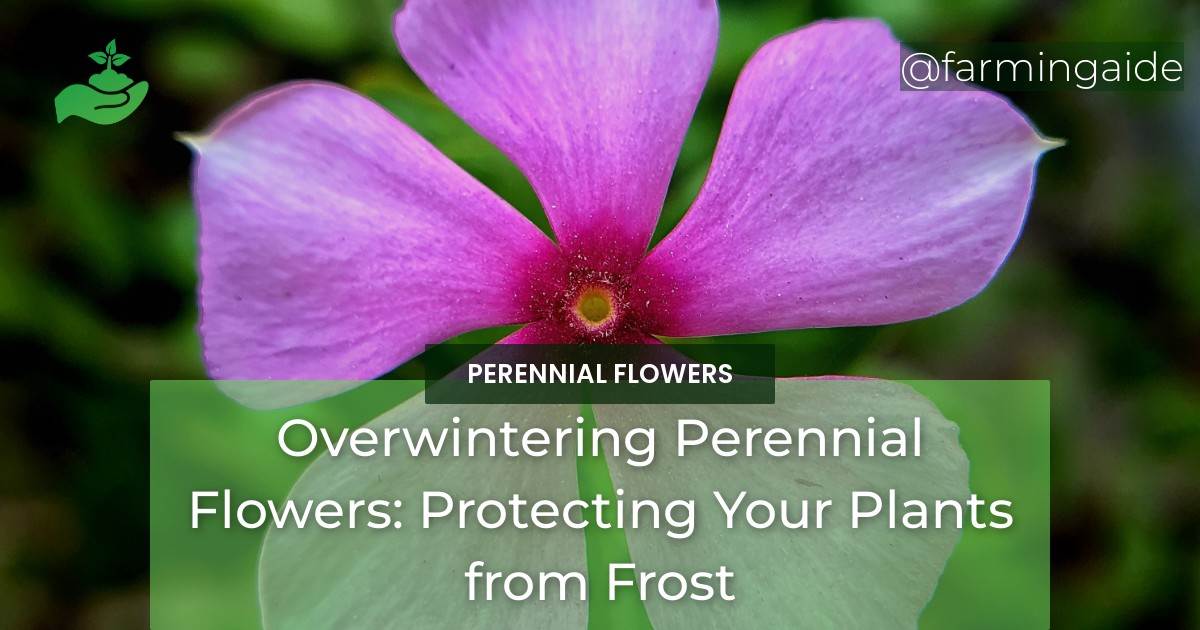Perennial flowers are a beautiful addition to any garden or landscape. These hardy plants come back year after year, adding color and texture to your outdoor space. However, as the temperatures begin to drop and frost becomes a concern, it’s important to take steps to protect your plants from the harsh winter weather. This is where overwintering comes in, which is the process of preparing and protecting your plants from the cold. In this article, we will explore the importance of overwintering perennial flowers and provide you with tips and strategies for successfully protecting your plants from frost.
Understanding Perennial Flowers
Perennial flowers are plants that live for more than two years. They bloom during the spring and summer months, go dormant during the fall and winter, and then come back to life the following year. There are many different types of perennial flowers, each with their unique features and requirements. Some popular examples include Black-eyed Susans, Daylilies, and Coneflowers.
Why is Overwintering Important for Perennial Flowers?
Overwintering is critical for the survival of your perennial flowers. If you fail to protect your plants from frost and other winter weather conditions, they may not survive until the spring. Overwintering helps to ensure that your plants have the best chance of making it through the winter and coming back strong in the spring.
ALSO READ
Factors Affecting Overwintering of Perennial Flowers
Plant Hardiness Zones
One of the most important factors affecting the overwintering of perennial flowers is the plant’s hardiness zone. Hardiness zones are geographic regions that are defined by their climate and weather patterns. Each zone is assigned a number based on its average annual minimum temperature. This number can range from 1 (the coldest) to 13 (the warmest). Knowing your plant’s hardiness zone can help you determine the best strategies for protecting it during the winter.
Soil Moisture
The moisture level of your soil can also impact the overwintering of your perennial flowers. Plants that are overwatered or planted in poorly-draining soil are more susceptible to winter damage. This is because excess moisture can lead to the freezing and thawing of the soil around the plant’s roots, which can cause damage.
Plant Health
The overall health of your plants can also impact their ability to overwinter successfully. Plants that are stressed or diseased are more vulnerable to winter damage. Make sure to keep your plants healthy throughout the growing season by watering, fertilizing, and providing them with the appropriate care.
Tips for Successfully Overwintering Perennial Flowers
Mulching
Mulching is one of the most effective ways to protect your plants from frost. Apply a layer of mulch around the base of your plants to help regulate soil temperature and moisture levels. Mulch also helps to insulate the roots and prevent them from freezing.
Watering
Proper watering is critical for the overwintering of your perennial flowers. Make sure to water your plants thoroughly before the first frost of the season. This will help to ensure that your plants are well-hydrated going into the winter months.
Pruning
Pruning your plants can help to promote healthy growth and prevent winter damage. Remove any dead or damaged branches, as well as any foliage that has turned yellow or brown. This will help to prevent pests and disease from taking hold and allow your plants to focus their energy on growth and repair.
Pest Control
Pests can be a major problem during the winter months, as they are attracted to the warmth and shelter of your plants. Make sure to inspect your plants regularly and remove any pests that you find. You can also use insecticides and other pest control methods to prevent infestations.
Covering
Consider covering your plants with blankets, burlap, or other materials to protect them from frost. Make sure to remove the coverings during the day to allow your plants to get sunlight and air circulation.
Fertilizing
Fertilizing your plants in the fall can help to promote healthy growth and prepare them for the winter months. Use a balanced fertilizer that is high in phosphorus and potassium to help your plants build strong roots and resist cold temperatures.
Transplanting
If your plants are in pots or containers, consider transplanting them into the ground before the winter months. This will help to protect their roots and ensure that they have access to the nutrients and moisture that they need to survive.
ALSO READ
-Can I Use Overwintering Techniques for Perennial Flowers in a Cutting Garden?
Yes, overwintering techniques can be used for perennial flowers in cutting gardens. Taking steps such as mulching, proper pruning, and protecting from harsh weather can help ensure the survival of perennial flowers through the winter, allowing for beautiful blooms in the following seasons.
Conclusion
Overwintering perennial flowers is an essential part of maintaining a healthy and beautiful garden. By understanding the factors that affect overwintering, and following our tips and strategies, you can help to ensure that your plants survive the winter and come back strong in the spring.


